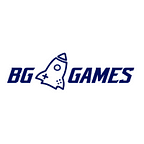The Orchestra Conductor Unveiling the Role of the Project Manager in Video Game Development
The world of video games is a symphony of creativity, technical prowess, and meticulous planning. From the pixelated pioneers of the Atari era to the hyper-realistic landscapes of today’s AAA titles, crafting a game requires the harmonious collaboration of a diverse team. But who ensures all these talented individuals play their part in perfect unison? Enter the Project Manager (PM), the maestro behind the curtain, wielding the baton that guides the development process. Let’s delve deeper with BG Games into the role of this specialist!
A Legacy of Leadership: From Paperwork to Pixels
While the concept of project management has roots tracing back to ancient civilizations, its application in video game development is a relatively recent phenomenon. The early days were characterized by a more organic, seat-of-the-pants approach. Shigeru Miyamoto, the legendary creator of Mario, famously developed the original Super Mario Bros. with a small team, relying on intuition and adaptability. However, as games grew in complexity, the need for a structured approach became undeniable.
The rise of the PM coincided with the burgeoning of the personal computer (PC) gaming scene in the 1980s and 90s. Studios like Sierra On-Line and Bullfrog Productions pioneered the use of project management methodologies like the Waterfall model, which emphasizes a linear, sequential workflow. The PM became the central figure, responsible for breaking down the game’s development into discrete tasks, assigning those tasks to team members, and ensuring deadlines were met.
The PM’s Multifaceted Role: From Vision to Execution
The responsibilities of a Project Manager in video game development are as varied as the games themselves. They act as a bridge between the creative and technical aspects, ensuring clear communication and collaboration between artists, programmers, designers, audio engineers, and other specialists.
Here’s a deeper dive into some of the key functions a PM performs:
- Project Initiation and Planning: The PM works closely with the game director and other stakeholders to define the project’s scope, objectives, and target release date. This crucial stage involves creating a detailed project plan that outlines the development roadmap, resource allocation, and potential risks.
- Task Management and Resource Allocation: The PM meticulously breaks down the development process into smaller, manageable tasks. They then assign these tasks to team members based on their skills and expertise, ensuring everyone has a clear understanding of their deliverables and deadlines.
- Risk Management: Project development is rarely a smooth ride. Unforeseen challenges like technical glitches, creative roadblocks, and resource limitations can derail progress. The PM proactively identifies potential risks, develops mitigation strategies, and monitors the project’s progress to address any issues that may arise.
- Communication and Collaboration: Effective communication is the lifeblood of any successful project. The PM acts as a central communication hub, fostering teamwork, facilitating meetings, and keeping all stakeholders informed of project progress.
- Budget Management: Staying within the allotted budget is crucial for any game development project. The PM meticulously tracks costs, oversees resource allocation, and identifies areas where budget optimization might be necessary.
- Conflict Resolution: Creative tensions and differing viewpoints are inevitable during game development. The PM acts as a mediator, fostering a collaborative environment, addressing concerns, and ensuring everyone works towards the shared vision of the game.
PM Styles and Tools: A Spectrum of Approaches
The world of project management methodologies is vast and ever-evolving. While the traditional Waterfall model provided a solid foundation, its rigid structure often proved ill-suited for the dynamic and iterative nature of game development. Agile methodologies like Scrum and Kanban have gained widespread adoption, offering greater flexibility and adaptability.
The specific PM style chosen hinges on the project’s scale, complexity, and development team structure. Some PMs may favor a more hands-on approach, meticulously micromanaging tasks and deadlines. Others may adopt a more delegative style, empowering team members and fostering a sense of ownership. Ultimately, the most effective PMs have the adaptability and leadership skills to choose the most suitable approach for their specific project.
Case Study: PM Leading the Charge
Here is a real-world example that showcases the impact of strong project management on game development success:
- The Mastermind Behind The Witcher 3: Wild Hunt: CD Projekt Red’s open-world masterpiece, The Witcher 3: Wild Hunt, is lauded for its immersive world, captivating story, and meticulously crafted gameplay. Marcin Iwinski, co-founder of CD Projekt Red, is a prime example of a PM who championed a unique approach. He fostered a culture of collaboration, empowered team members to take ownership, and prioritized polish above all else. The result? A critically acclaimed game that set a new benchmark for open-world RPGs.
The Indispensable Conductor
Project Manager in video game development is far more than just a glorified taskmaster — believe BG Games. PM is the orchestra conductor, wielding the baton that weaves the talents of a diverse team into a cohesive symphony. Their ability to plan, communicate, adapt, and lead is instrumental in transforming creative visions into engaging realities. As video games continue to evolve in complexity and ambition, the role of the PM will only become more crucial. By fostering collaboration, mitigating risks, and ensuring a smooth development process, skilled Project Managers will remain the unsung heroes behind the exhilarating worlds and unforgettable experiences we cherish as gamers!
